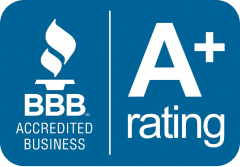Keep in mind that Plan D’s drug coverage and copayments are subject to change from year to year.
Prescription drug coverage is an important aspect of Medicare that should be carefully considered by both new enrollees and current beneficiaries during the annual open enrollment period (Oct. 15 – Dec. 7).
Prescription drug coverage is included in Medicare Part D plans, which are offered by private insurance companies. You can enrol in a Medicare Advantage plan that includes prescription drug coverage, or you can enrol in a separate Part D plan.
Individuals who are enrolled in Original Medicare (Part A and/or Part B) and are in need of prescription drug coverage may enrol in a Medicare Part D plan on their own.
Insurance for medications is a standard feature of Medicare Advantage plans. Except for certain types of plans, such as medical savings account plans and some private fee-for-service plans, enrollees in Medicare Advantage plans that do not include Part D coverage are generally unable to purchase additional Part D coverage. There is a permanent Medicare Part D late enrollment penalty if you wait until after you’re already enrolled in Medicare to switch to a plan that includes Part D coverage.
Regardless, it’s critical to learn which medications are covered and how much they’ll cost under your particular plan.
What Medicare Part D covers
Both generic and name brand medications are covered by Medicare prescription drug plans. Medicare establishes requirements for plan coverage, and all policies must adhere to them. Drugs for high blood pressure, high cholesterol, and asthma are examples of required categories that all plans must cover, but within each category, plans can pick and choose which individual drugs to cover.
To determine which medications to include in its formulary, each Medicare Part D plan individually decides which ones to cover. Your medication might not be on a particular formulary, but a substitute might be.
Copayments, tier pricing, and other restrictions can cause your drug costs to vary from plan to plan, just as formularies do. Carefully consider your current prescription needs and your budget when selecting a coverage plan. “So often people just stick with the coverage they have, even though there may be better, less expensive alternatives out there,” says Sue Greeno, a Medicare advocate who recently retired from the Center for Medicare Advocacy. You can aid your search efforts by following these five steps.
1. Stay up to date with your current plan
Your plan should send you an Annual Notice of Change by the end of September every year. About midway through October, this will also be posted on the website of your insurance provider. Greeno advises that everyone read this document thoroughly and double-check the following details:
Changes in the drug formulary
Your prescription drugs may not be covered by your Part D plan next year even if they are this year. Formulas are constantly evolving. Your insurance company may be dropping, substituting, or restricting coverage for some of your prescription drugs; check the Annual Notice of Change to find out which ones.
Changes in cost
Find out if your plan’s drug coverage is changing, and if so, how much the price will increase or decrease. Cost-sharing arrangements such as co-payments, deductibles, and coinsurance are subject to change. Most plans have a sliding scale for copayments, with higher costs associated with prescription brand names than with cheaper generic alternatives. Be sure you know how any changes in the tiers of your medications will affect your out-of-pocket expenses.
Get in touch with your insurer if you have any concerns about the Annual Notice of Change.
2. Use Medicare.gov to find plans
Each year during Medicare’s open enrollment period, you should compare plans and enrol in the one that best suits your needs for Part D coverage (Oct. 15 to Dec. 7).
Get some assistance from the Medicare.gov comparison tool. The features of the tool make it simpler to learn whether or not your prescription drugs are covered, which nearby pharmacies accept your insurance, and how much you will have to pay in co-payments and deductibles.
Following these guidelines will make the comparison tool much more manageable:
Enter your drugs
The tool allows you to enter all of your medications and then search for Medicare Part D plans or Medicare Advantage plans (or both). If you have a My Medicare account, your previously entered medications will be re-entered for you.
When the list of plans appears, it will automatically arrange them from least expensive to most expensive when it comes to premiums and prescription drugs. It is possible to check the plans and see if your medications are covered and at what cost.
To clarify, the search results may not include plans that cover all of your medications just because you typed in the names of those medications. Examining the search results more closely will help you determine which, if any, of the available plans will cover the medications you need.
Choose your pharmacies
During the process of entering your medications, you will be prompted to locate up to five pharmacies within driving distance. In addition to traditional stores, mail order is another distribution channel you can use. You can use the tool to look up specific pharmacies, and it will also suggest nearby pharmacies that participate in your insurance plan based on your location. You can use an interactive map to look for pharmacies in other nearby cities that may have better prices. According to Greeno, you should use this resource because copays for the same medication can vary widely depending on the pharmacy you visit.
Compare Part D vs. Medicare Advantage
The link at the top of the results page lets you quickly switch between basic Part D plans and Medicare Advantage Part D plans available in your area. This facilitates a direct comparison between Medicare Advantage with prescription drug coverage and Medicare Part D stand-alone plans in terms of price and coverage.
Check for pricing tiers
Copayments for brand-name medications and certain classes of expensive drugs are often increased by a plan’s use of tiered pricing. In addition to the presently in effect, less expensive pricing for insulin, there are also tiers for patients with special needs and for those who require expensive drugs. Different plans have different tiers and prices for various medications.
In determining your final price, the tier structure may be taken into consideration. One scenario in which a low-premium, high-deductible plan could be the most cost-effective is if you only use generic medications with very low copays that do not contribute to your deductible. However, a person who has significant prescription drug costs out of pocket may prefer the plan with a lower deductible and a slightly higher premium.
3. Look for other restrictions
Prescription drug coverage may be subject to additional limitations, such as tiered pricing.
Coverage caps
Some insurance policies place monthly limits on the number of pills or doses of a given medication that they will cover. The vast majority of the time, this is satisfactory. However, due to these limitations, some patients may be unable to benefit from the cost savings associated with bulk mail-order, and may instead need to speak with their doctor about alternative, more cost-effective treatment options.
Step therapy
The use of “step therapy” by Medicare Advantage plans became legal in 2019. Patients are required to use less expensive treatments before they can progress to more expensive options under this plan.
Less expensive lifestyle adjustments or medicines can be just as effective for many patients as more expensive treatments. But there are situations where step therapy is a barrier to a patient receiving the emergency care they require immediately. Because of this, it is essential to ask your doctor about step therapy if it is part of your treatment plan.
4. Understand the exception process
Unexpected health changes can occur at any time during the year, requiring a patient to switch to a medication that is not included in their plan’s formulary. The effectiveness of a covered medication can deteriorate, forcing patients to either switch to a more expensive alternative or to a medication that isn’t covered at all by their plan.
Members can request a waiver in these cases with the help of their physicians. According to Greeno, “in most cases insurers will grant the exemption.” Patients will have to jump through yet another hoop. Check the specifics of this procedure with any prospective Part D plans.
5. Ask for help
Comparing available options can be difficult for anyone, even those with relatively low drug requirements. If you need assistance, look up the State Health Insurance Assistance Program (SHIP) in your area. In addition, Greeno recommends looking for assistance at a senior centre in your area. Employees are usually able to answer questions about open enrollment or point you in the direction of a helpful resource.








